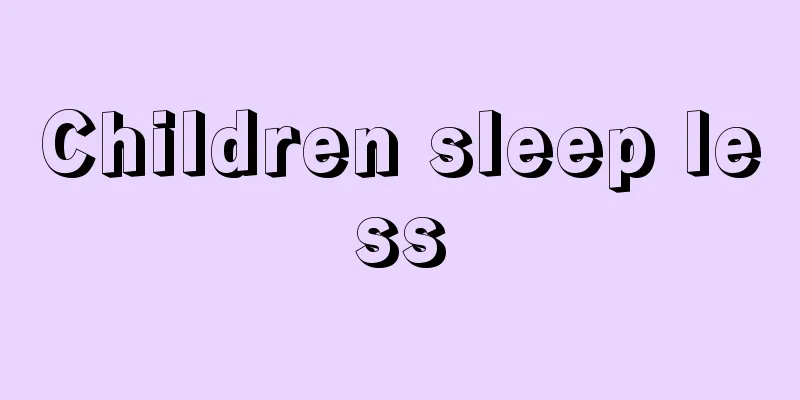Why does the back of the child's head sweat?

|
We all know that children are naturally lively and active, and their health is also the most concerned issue for every parent. Often many families will find symptoms such as sweating on the back of their children's heads. Sometimes this makes many parents particularly worried, fearing that their children have some kind of disease. In fact, there are many reasons for sweating on the back of a child's head. Let us understand what causes sweating on the back of a child's head. What is the reason for sweating on the back of the child's head? Excessive secretion of sweat glands is called hyperhidrosis. Excessive sweating is a common symptom in infancy and childhood. Some infants sweat excessively during daytime activities, some sweat excessively when just going to bed, and some sweat excessively in the second half of the night. Some of these hyperhidrosis are physiological, while others may be pathological. Parents should correctly distinguish between physiological and pathological hyperhidrosis based on the characteristics of their children's hyperhidrosis. The secretion of sweat glands is related to the excitability of the sympathetic nerves and is not directly controlled by the parasympathetic nerves. Therefore, any cause that can increase the excitability of the sympathetic nerves can cause excessive sweating. 1. Physiological hyperhidrosis refers to sweating during sleep when the child is well-developed, healthy, and has no disease. The reason is that children's brain nerves are not yet fully developed, and children are in the period of growth and development. Their body metabolism is very active. If they are a little excited and stimulated, they will sweat to evaporate the heat in the body and maintain normal body temperature. Parents are often accustomed to deciding the best environmental temperature for their children based on their own subjective feelings, and like to cover their babies with more blankets and keep them tightly covered. The baby is overheated and can only regulate his body temperature by sweating. In addition, drinking milk, eating chocolate, etc. before going to bed can also cause excessive sweating in children. Physiological hyperhidrosis is more common in the head and neck, often occurring within half an hour after falling asleep, and sweating stops in about an hour. 2. Pathological hyperhidrosis refers to hyperhidrosis that occurs in a quiet state. The hyperhidrosis caused by rickets is manifested as excessive sweating on the head. Sweating increases during breastfeeding and after falling asleep, and gradually disappears after a deep sleep. It has nothing to do with the season. Weak and sick children often sweat excessively on their head, chest, and back during daytime activities or after falling asleep at night. This is more common in children around one year old and children before and after weaning. Insufficient food intake or inadequate absorption and utilization of food due to improper feeding can also cause malnutrition and excessive sweating. If your baby often sweats before dawn or in the early morning when he is empty stomach, it may be caused by hypoglycemia. At this time, you can give him sugar water or cakes to eat, and the sweating will stop. If a child often sweats in the second half of the night, this sweating is often called "night sweats", which is a common symptom of tuberculosis. It is caused by the toxins produced by the tuberculosis bacteria in the body stimulating the body's sympathetic nerves and making them excited. The main areas of sweating are the chest and back. It must be pointed out that if the baby often sweats profusely for unknown reasons or sweats on one side or the lower body, he should go to the hospital for further examination and treatment. Home care: For children with excessive sweating, it is important to pay attention to skin care, take a bath or sponge bath frequently, change underwear, keep the skin clean, and prevent blockage of the sweat gland ducts from causing sweat rash or boils, or erosion in the skin folds, which may cause secondary skin infection. Talcum powder should be used appropriately, as excessive use may cause irritation to the skin. If your child sweats a lot, you should let him drink more water to replenish the lack of water in the body. If it is pathological hyperhidrosis, the primary disease should be treated actively. Many of us parents always panic when our children have physical problems. After understanding why children sweat on the back of their heads, we know that there are many reasons for sweating on the back of their heads. For example, wearing too many clothes or lack of trace elements can cause such symptoms. If such symptoms occur, you must go to the hospital to confirm the cause so that you can prescribe the right medicine. |
<<: Is yogurt good for babies?
>>: How to treat baby's chin eczema
Recommend
What is good for children to eat to moisten the intestines and relieve constipation
Children have delicate constitutions and are pron...
What to do if your child is slow to respond
In life, we often hear many parents say that thei...
Treatment for night sweats in children
We know that sweating is a normal part of human m...
Is it necessary to test the bone density of babies?
Do newborn babies need bone density tests? This i...
What to do if children have tooth decay pain
Children like to eat sweets, but they do not have...
Child's forehead protrusion
Some children have very prominent foreheads, whic...
Breakfast recipes for eight-month-old babies
Now the baby's health has become the most imp...
What medicine should I use when my child falls?
Because children tend to be active, running and j...
What happened to the child's broken nose?
Nowadays, most families have only one child, and ...
What to do if a premature newborn baby fails the hearing screening?
Premature newborns have more serious hearing dama...
What to do if your child has herpes
Many children are prone to herpes when they are y...
Is meningitis serious in children?
What is meningitis? Patients often ask such quest...
What to do if your child doesn't like to eat
Many parents will encounter a lot of troubles whe...
What should I do if my baby catches a cold and coughs? Simple but effective method
Babies have relatively weak resistance, and some ...
What should I do if my child always refuses to eat?
Many families are worried about what to do if the...









